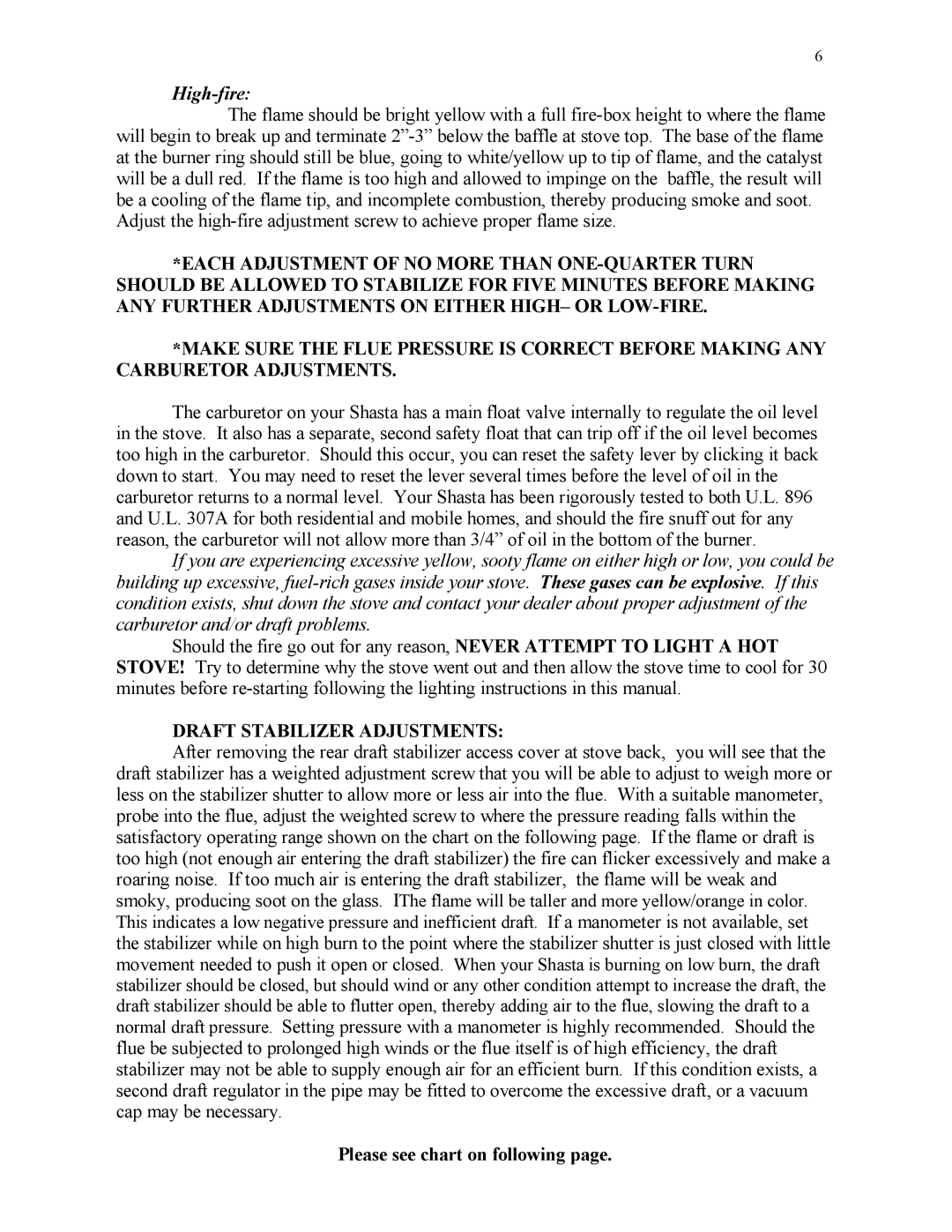SHASTA specifications
The Kuma Stoves SHASTA is a premium wood stove that exemplifies contemporary design and engineering excellence. Renowned for its extraordinary heat output and efficiency, the SHASTA is a perfect addition to any home seeking both style and functional warmth. With a commitment to sustainability, Kuma Stoves has ensured that the SHASTA meets stringent EPA standards, making it an eco-friendly choice for heating.One of the standout features of the SHASTA is its exceptional heat output, which can efficiently warm large spaces. With a heating capacity of up to 2,500 square feet, it caters to the needs of various homes, ensuring comfort during the cold winter months. The stove boasts a burn time of up to 10 hours, allowing for longer intervals without the need for constant replenishment of fuel, enhancing convenience for homeowners.
The SHASTA is equipped with Kuma’s advanced clean burning technology, which maximizes efficiency while minimizing emissions. This technology utilizes secondary combustion, where smoke and gases are ignited above the fire, thus ensuring that the wood burns more completely. This not only results in less smoke but also reduces the environmental impact, allowing users to enjoy a cleaner, healthier heating option.
In terms of design, the SHASTA embodies a sleek, modern aesthetic that can seamlessly integrate into various home decor styles. It features a large viewing window framed by a robust cast iron door, allowing for a captivating view of the flames. This design element not only enhances the ambiance of any room but also showcases the craftsmanship that goes into each stove.
Durability is a hallmark of the SHASTA, built with heavy-duty steel and cast iron components that promise longevity. The stove is rigorously tested to ensure it can withstand high temperatures and continuous use, providing homeowners with peace of mind regarding their investment.
The SHASTA also includes convenient features such as an easy-to-use ash removal system, allowing for simple maintenance and upkeep. Its adjustable air control enables users to regulate the heat output, providing customized comfort depending on the weather and personal preferences.
In summary, the Kuma Stoves SHASTA combines impressive heating capabilities with advanced technologies and stylish design. Whether for cozy evenings or efficiently warming larger spaces, this wood stove represents a dependable, eco-friendly, and aesthetically pleasing choice for modern homes.
